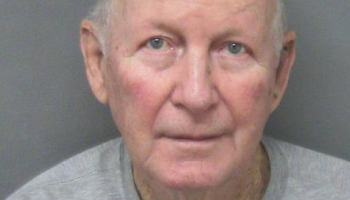As the battle lines for health care reform are being drawn – and redrawn – a silent segment of the population is strategically left out of the conversation. A group of individuals who have been deemed enemies of society, and cast away behind iron bars to fend for themselves. In California, health care in the state’s 33 prisons is so inadequate that one unnecessary death takes place per week, as inmates are often stacked in triple bunk beds in hallways and gymnasiums. With nearly twice the number of prisoners than it was designed to hold, California prisons will have to be cut by about 40,000 in the next two years – and it’s about time.
Federal judges just released a 184-page order demanding that California’s inmate population be reduced by 27%, and gave the state 45 days to come up with a plan. In what they termed an ‘unconstitutional prison health care system’, the three-judge panel concluded that disease was spreading rampantly and prisoner-on-prisoner violence was all but unavoidable. Forced to close a $26 billion dollar budget gap, California will now have to look at mechanisms to reducing its extensive prison spending, which in 2007 topped out at nearly $10 billion (approximately $49,000 for each inmate).
Whether it’s for pure economic reasons or for an actual concern over the well being of prisoners, California will hopefully serve as an example for a reversal of the ever-growing prison industrial complex. A system that unfairly profiles and detains minorities, American jails produce a vicious cycle of recidivism and community breakdown. Last year, the Pew Center on the States released a scathing report stating that one in every 100 American adults was in jail, and that an astonishing one in 15 Black adults was behind bars. According to government reports in 2007, there were three times as many Blacks in jail than in college dorms, with Latinos not far behind at 2.7 times more behind bars than in secondary schooling.
In order for us to truly amend our incarceration culture where one in four prisoners in the entire world are in the United States, we have to take a look at the root causes of the dilemma. Why is it that more than half of all Black men in America don’t finish high school? Why is the unemployment rate in powerful cities like New York at 50% for Black men? Why did Congress abolish Pell grants for prisoners in 1994 that virtually eliminated all 350-incarceration college programs across the country? Is it any coincidence then that six out of 10 Black men who drop out of high school have spent time in jail by their mid-30s? With unemployment rates on the rise (and many would argue well in to the double digits among people of color), arrests for nonviolent infractions and petty crimes are leaving families motherless, fatherless and hopeless.
We live in a world that promotes law, order and justice, yet our actions often times prove otherwise. As if the implementation of ridiculous drug laws and the ‘three strike rule’ weren’t enough to catapult our prison population, now our children are increasingly finding themselves in handcuffs at an early age. In 2006, a 14-year-old Black student in Texas was sentenced to seven years for shoving a teacher’s aide, while in 2007, an eighth grader in New York found herself handcuffed to a pole above her head for three hours while being questioned by police for writing on her desk at school. In Chicago it’s no better, as 77% of all student arrests were Black, although Blacks make up just half of the city’s student body.
And let’s not forget women, who are in fact the largest growing segment of the prison population. According to Prisoners for Children, 85% of women are now serving time for non-violent crimes, with Black women six times as likely to go to jail than their White counterparts. These women, often the heads of their households, are forced to withstand dire circumstances including giving birth while in shackles.
In 2006, the state of California spent about $500 million in overtime for its incarceration system, and in 2007, states spent $44 billion in American tax dollars on prisons. Whether it’s because of our diminishing economy, or if it’s out of genuine concern, California is leading the way – or rather being forced to lead the way – in amending our unjust prison industrial complex. If we truly care about the future our nation and all its inhabitants, each and every state needs to follow suit immediately.
READ MORE FROM REVEREND AL SHARPTON:
OPINION: What Gates Will Teach Us
http://cdn.newsone.com/external/js/gallery/192491
–>















